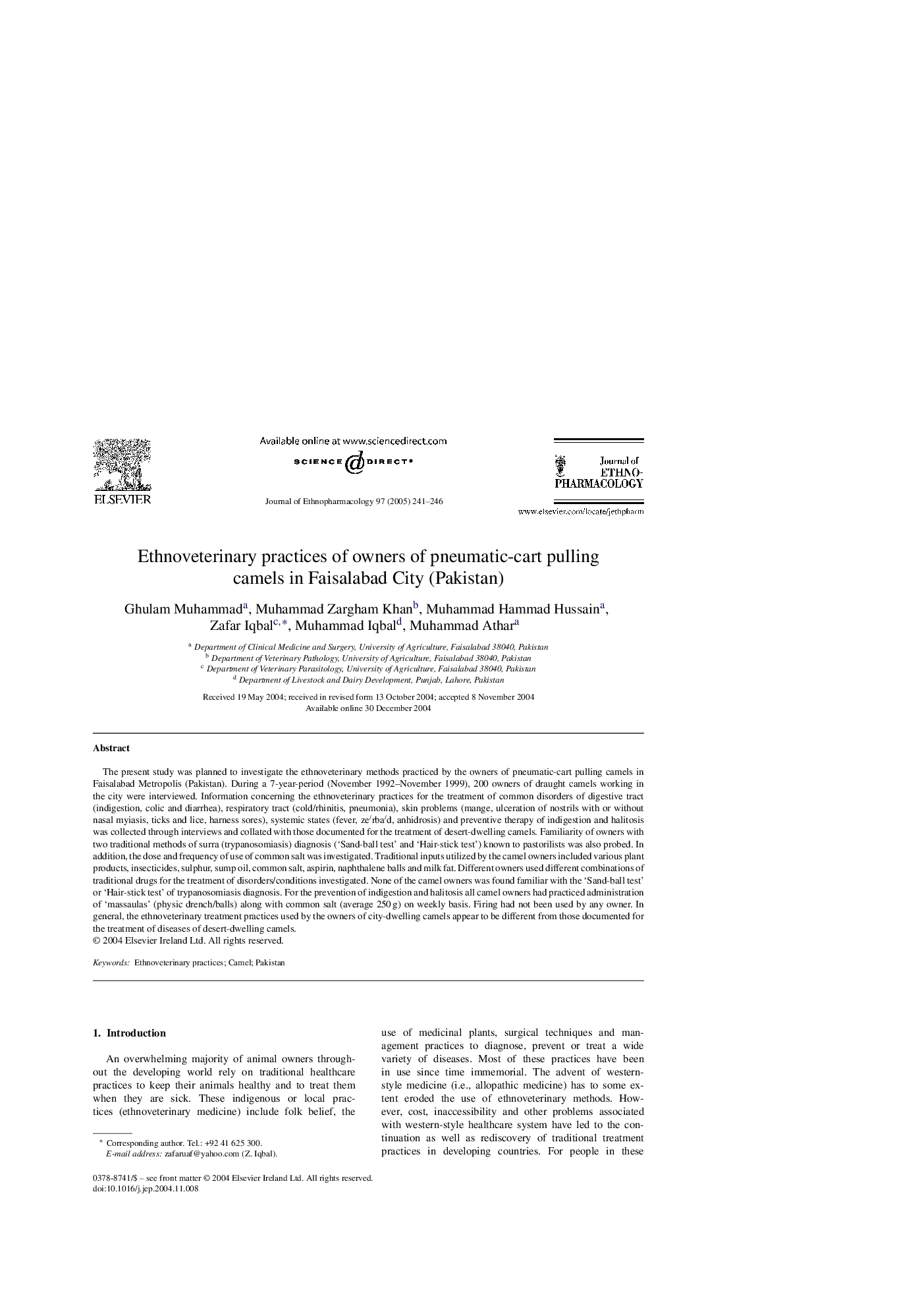| Article ID | Journal | Published Year | Pages | File Type |
|---|---|---|---|---|
| 9011422 | Journal of Ethnopharmacology | 2005 | 6 Pages |
Abstract
The present study was planned to investigate the ethnoveterinary methods practiced by the owners of pneumatic-cart pulling camels in Faisalabad Metropolis (Pakistan). During a 7-year-period (November 1992-November 1999), 200 owners of draught camels working in the city were interviewed. Information concerning the ethnoveterinary practices for the treatment of common disorders of digestive tract (indigestion, colic and diarrhea), respiratory tract (cold/rhinitis, pneumonia), skin problems (mange, ulceration of nostrils with or without nasal myiasis, ticks and lice, harness sores), systemic states (fever, ze/rba/d, anhidrosis) and preventive therapy of indigestion and halitosis was collected through interviews and collated with those documented for the treatment of desert-dwelling camels. Familiarity of owners with two traditional methods of surra (trypanosomiasis) diagnosis ('Sand-ball test' and 'Hair-stick test') known to pastorilists was also probed. In addition, the dose and frequency of use of common salt was investigated. Traditional inputs utilized by the camel owners included various plant products, insecticides, sulphur, sump oil, common salt, aspirin, naphthalene balls and milk fat. Different owners used different combinations of traditional drugs for the treatment of disorders/conditions investigated. None of the camel owners was found familiar with the 'Sand-ball test' or 'Hair-stick test' of trypanosomiasis diagnosis. For the prevention of indigestion and halitosis all camel owners had practiced administration of 'massaulas' (physic drench/balls) along with common salt (average 250Â g) on weekly basis. Firing had not been used by any owner. In general, the ethnoveterinary treatment practices used by the owners of city-dwelling camels appear to be different from those documented for the treatment of diseases of desert-dwelling camels.
Related Topics
Health Sciences
Pharmacology, Toxicology and Pharmaceutical Science
Pharmacology
Authors
Ghulam Muhammad, Muhammad Zargham Khan, Muhammad Hammad Hussain, Zafar Iqbal, Muhammad Iqbal, Muhammad Athar,
